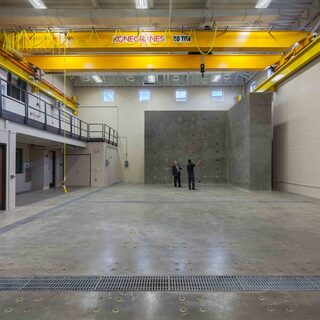Tradeline's industry reports are a must-read resource for those involved in facilities planning and management. Reports include management case studies, current and in-depth project profiles, and editorials on the latest facilities management issues.
Latest Reports
VCU’s McGlothlin Medical Education Center Designed to Teach Medicine a New Way
The 12-story McGlothlin Medical Education Center at Virginia Commonwealth University, completed in 2013, facilitates a new model of collaborative, team-based learning. The C3 curriculum—centered on the needs of the learner, clinically driven, and using competencies as outcomes—reflects a two-year process of reinventing the first and second years of medical school (M1-M2) involving the dean, faculty, executive-level curriculum staff, and students.
Robust Economic Growth and Increased Demand for Labor Drive Strong End to 2015
The U.S. economy continued growing at a healthy rate in 2015, adding approximately 221,000 jobs per month over the year. Wage and profit increases in the construction sector are expected to pull new entrants into the labor force with some restructuring from other sectors of the economy, for example energy and exports. Construction prices increased nationally, trending toward 8 percent, depending on location.
Construction Costs
The Next-Next-Generation Workplace
Workspace planners are often asked to design to a 10-to-20-year time horizon, but the more rapidly technology advances, the harder this becomes. And it’s not just the hardware, software, and work tasks that are going to change, says Kay Sargent, director of workplace strategies at Lendlease. It’s also the workers themselves. Science shows that workers’ brains are going to work differently in 20 years, says Sargent, and companies need to start planning for this now, or pay the price.
Arthur Weisberg Family Applied Engineering Complex
The new Weisberg Family Applied Engineering Complex, adjacent to the existing Robert C. Byrd Biotechnology Center, houses six academic and research programs: College of Information Technology, Mechanical & Electrical Engineering, Mathematics & Computational Science, Computer Modeling & Digital Imaging, Transportation Research Corporation, and Marshall University Research Corporation (MURC).
Transforming Existing Spaces into Active Learning Classrooms
Research confirms that active and engaging university classrooms improve learning outcomes, but what features produce the most positive—and cost-effective—results? Surprisingly, perhaps, advanced technology is not nearly as high on the list of success factors as whiteboards, flexible furniture, and other space-related amenities.





